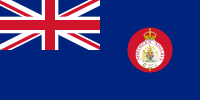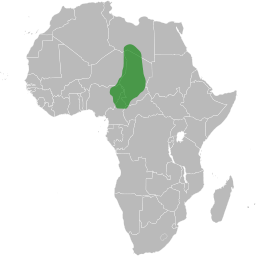Sayfawa dynasty
Part of a series on the |
|---|
| History of Northern Nigeria |
 |
|
Timeline
|
|
By ethnicity
|
|
By topic
|
|
By Province
|

Sayfawa dynasty or more properly Sefuwa dynasty is the name of the kings (or mai, as they called themselves) of the Kanem–Bornu Empire, centered first in Kanem in western Chad, and then, after 1380, in Borno (today north-eastern Nigeria).
The dynasty was rooted in the Tubu expansion by the Kanembu.[1] The first ten kings present in the list in the Girgam are difficult to date and to identify. The dynasty, one of Africa's longest reigning, lost the throne in 1846.
Sayfawa-Humewa kings in Kanem
The chronology of the Sefuwa concerns the rule of the Sayfawa dynasty first over Kanem, then over Kanem-Bornu and finally, since c. 1380, over Bornu alone. The chronology of kings has been ascertained from dynastic records of the Sefuwa on the basis of lengths of reign for the successive kings (mai), found in the Girgam. African historians presently use several conflicting chronologies for the history of Kanem-Bornu. Below a list of the main kings of the Empire with the conflicting chronologies is provided.
| Name of the king (mai) | Barth 1857[2] | Palmer 1936[3] | Urvoy 1941[4] |
|---|---|---|---|
| (12) Hume | 1086–1097 | 1086–1097 | 1085–1097 |
| (17) Dunama Dibbalemi | 1221–1259 | 1221–1259 | 1210–1224 |
| (48) Ali Gajideni | 1472–1504 | 1476–1503 | 1473–1507 |
| (49) Idris Katakarmabe | 1504–1526 | 1503–1526 | 1507–1529 |
| (54) Idris Alauma | 1571–1603 | 1570-1602/3 | 1580–1616 |
See also
References
- ↑ US Country Studies: Chad
- ↑ Barth, Travels, II, 15-25, 581-602.
- ↑ Palmer, Bornu, 112-268.
- ↑ Urvoy "Chronologie", 27-31.
Bibliography
- Barkindo, Bawuro (1985). "The early states of the Central Sudan", in: J. Ajayi and M. Crowder (eds.), The History of West Africa, vol. I, 3rd ed. Harlow, 225-254.
- Barth, Heinrich (1858). "Chronological table, containing a list of the Sefuwa", in: Travel and Discoveries in North and Central Africa. Vol. II, New York, 581-602.
- Lavers, John (1993). "Adventures in the chronology of the states of the Chad Basin". In: D. Barreteau and C. v. Graffenried (eds.), Datations et chronologies dans le Bassin du Lac Chad, Paris, 255-267.
- Levtzion, Nehemia (1978):"The Saharan and the Sudan from the Arab conquest of the Maghrib to the rise of the Almoravids", in: J. D. Fage (ed.), The Cambridge History of Africa, vol. II, Cambridge 1978, pp. 637–684.
- Nehemia Levtzion und John Hopkins (1981): Corpus of Early Arabic Sources for West African History, Cambridge.
- Palmer, Herbert Richmond (1936). Bornu Sahara and Sudan. London.
- Smith, Abdullahi (1971). The early states of the Central Sudan, in: J. Ajayi and M. Crowder (Hg.), History of West Africa. Vol. I, 1. Ausg., London, 158-183.
- Stewart, John (1989). African States and Rulers: An encyclopedia of Native, Colonial and Independent States and Rulers Past and Present. Jefferson, NC: McFarland & Company, Inc., Publishers. p. 395 Pages. ISBN 0-89950-390-X.
- Urvoy, Yves (1941). "Chronologie du Bornou", Journal de la Société des Africanistes, 11, 21-31.
External links
| Look up chronology in Wiktionary, the free dictionary. |

